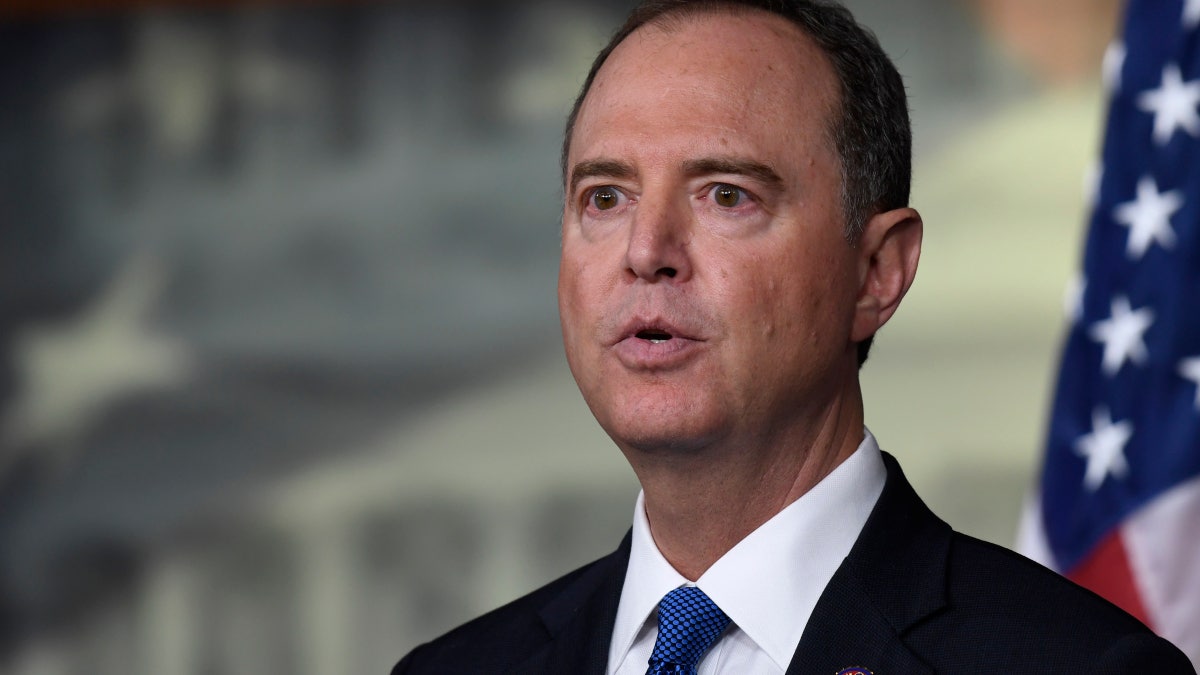INTERNACIONAL
¿Qué se sabe del alto el fuego entre Irán e Israel? Algunas claves en medio de la confusión

INTERNACIONAL
Taiwán alertó a la UE sobre las amenazas de infiltración impulsadas por el régimen chino para socavar la democracia

El presidente de Taiwán, William Lai, advirtió este martes que su país y la Unión Europea (UE) enfrentan amenazas comunes de interferencia externa, en especial intentos de manipulación electoral, desinformación y ataques a la confianza pública.
Las declaraciones se produjeron durante una reunión con miembros de la Comisión Especial del Parlamento Europeo sobre el Escudo Europeo de la Democracia, de visita en Taipei.
“Ambos se han encontrado con interferencias informativas e infiltraciones de fuerzas externas que han intentado manipular los resultados de las elecciones democráticas, crear confrontación en la sociedad y hacer tambalear la confianza de la gente en la democracia”, afirmó Lai, según un comunicado difundido por su oficina presidencial.
El mandatario taiwanés subrayó que Taiwán y la UE comparten valores fundamentales como la libertad y la democracia, y mantienen relaciones económicas y comerciales estrechas, aunque no tienen lazos diplomáticos formales. Pese a ello, Lai señaló que existe una cooperación creciente frente a riesgos híbridos como los que —según denunció— se originan en China.
La isla ha acusado en repetidas ocasiones a Beijing de desplegar campañas de desinformación, operaciones de influencia y ciberataques con el objetivo de socavar su sistema político. Lai reiteró que Taiwán rechaza las reclamaciones de soberanía de China, país que considera a la isla parte de su territorio y ha intensificado su presión diplomática y militar en los últimos años.
“Taiwán está decidido a trabajar para salvaguardar la democracia, la paz y la prosperidad en todo el mundo, y espera compartir su experiencia con Europa”, añadió el presidente taiwanés, al tiempo que agradeció el respaldo expresado por instituciones europeas ante las amenazas sobre el Estrecho.
En paralelo a la visita de la delegación europea, el Ministerio de Relaciones Exteriores de Taiwán (MOFA) valoró como “sincero y significativo” el apoyo expresado por Bruselas. El pronunciamiento del MOFA fue en respuesta a las conclusiones del 13.º Diálogo Estratégico UE-China, celebrado el 2 de julio en Bruselas y copresidido por la vicepresidenta de la Comisión Europea, Kaja Kallas.
Durante ese encuentro, la diplomática europea reiteró su rechazo a cualquier intento unilateral de modificar el statu quo en el Estrecho de Taiwán, en especial a través de fuerza militar o coerción, según el comunicado oficial. Kallas también manifestó preocupación por la situación de los derechos humanos en China y por las amenazas híbridas provenientes de Beijing, que afectan tanto a Europa como a la región del Indopacífico.
Además, el MOFA recordó que el Servicio Europeo de Acción Exterior (SEAE) ha emitido varios comunicados en respuesta a tres ejercicios militares a gran escala realizados por China desde mayo, los cuales incluyeron simulacros de bloqueo marítimo y ataques coordinados alrededor de la isla. Esos comunicados subrayaron la importancia de mantener la paz y la estabilidad en el Estrecho como elemento clave para la seguridad regional y global.
“La UE tiene un interés directo en mantener el statu quo en el Estrecho de Taiwán”, afirmó el MOFA en su declaración. El ministerio también aseguró que Taiwán continuará fortaleciendo la cooperación con Bruselas y otros aliados democráticos para proteger el orden internacional basado en normas, y para enfrentar las amenazas comunes que afectan a regímenes democráticos.
China ha rechazado todas las acusaciones de interferencia y sostiene que Taiwán busca apoyo extranjero para impulsar una agenda separatista. A pesar de ello, tanto Taiwán como la UE han intensificado en los últimos años los canales de comunicación informal, especialmente en áreas de comercio, tecnología, ciberseguridad y defensa de los valores democráticos.
(Con información de Reuters)
Asia / Pacific,TAIPEI
INTERNACIONAL
Trump invokes Russia collusion hoax while calling for longtime foe Schiff to face jail time

NEWYou can now listen to Fox News articles!
President Donald Trump called for California Democrat Sen. Adam Schiff to face jail time while invoking recently declassified documents alleging Obama administration officials «manufactured and politicized intelligence» to create the narrative that Russia was attempting to influence the 2016 presidential election.
«Adam ‘Shifty’ Schiff is in BIG TROUBLE!» Trump posted to Truth Social Sunday evening. «He falsified Loan Documents. He once said my son would go to prison on a SCAM that Schiff, along with other Crooked Dems, illegally ‘manufactured’ in order to stage an actual coup.»
«My son did nothing wrong, knew nothing about the fictional story,» he added. «It was an American Tragedy! Now Shifty should pay the price of prison for a real crime, not one made up by the corrupt accusers!»
Schiff is under scrutiny after the U.S. Federal Housing Finance Agency (FHFA) sent a letter to the Department of Justice in May sounding the alarm that in «multiple instances,» Schiff allegedly «falsified bank documents and property records to acquire more favorable loan terms, impacting payments from 2003-2019 for a Potomac, Maryland-based property.»
FEDERAL HOUSING OFFICIAL SUBMITTED SCHIFF CRIMINAL REFERRAL TO DOJ OVER MORTGAGE DOCUMENTS
President Donald Trump highlighted 2024 allegations of mortgage fraud against Sen. Adam Schiff, left — claims that Schiff has denied. (Getty Images)
FHFA is an independent federal agency that oversees Fannie Mae, Freddie Mac and the Federal Home Loan Bank System.
Schiff’s office did not respond to Fox News Digital’s request for comment Monday morning.
Trump publicly lambasted Schiff Tuesday over the alleged mortgage fraud, while Fannie Mae’s financial crimes investigations concluded last week in a letter to the FHFA that Schiff allegedly engaged in «a sustained pattern of possible occupancy misrepresentation» on five Fannie Mae loans, Fox News Digital previously reported.
«I have always suspected Shifty Adam Schiff was a scam artist,» Trump posted to Truth Social Tuesday. «And now I learn that Fannie Mae’s Financial Crimes Division have concluded that Adam Schiff has engaged in a sustained pattern of possible Mortgage Fraud.»
«Adam Schiff said that his primary residence was in MARYLAND to get a cheaper mortgage and rip off America, when he must LIVE in CALIFORNIA because he was a Congressman from CALIFORNIA. I always knew Adam Schiff was a Crook. The FRAUD began with the refinance of his Maryland property on February 6, 2009, and continued through multiple transactions until the Maryland property was correctly designated as a second home on October 13, 2020.»
Schiff has passed off the allegations as a continuation of Trump’s history of slamming the liberal lawmaker.

Sen. Adam Schiff is facing scrutiny over his home mortgages in California and Maryland. (Drew Angerer/Getty Images)
«Since I led his first impeachment, Trump has repeatedly called for me to be arrested for treason,» Schiff posted to X earlier in July after Trump first accused Schiff of mortgage fraud. «So in a way, I guess this is a bit of a letdown. And this baseless attempt at political retribution won’t stop me from holding him accountable. Not by a long shot.»
WATCH: ADAM SCHIFF SILENT AFTER TRUMP ACCUSED HIM OF MORTGAGE FRAUD
Trump and Schiff have long been political foes, which was underscored during Trump’s first administration when Schiff served as the lead House manager during the first impeachment trial against Trump in 2020, and when Schiff repeatedly promoted claims that Trump’s 2016 campaign colluded with Russia.
Days after Trump first posted about Schiff’s mortgages in Maryland and California, the president’s Director of National Intelligence Tulsi Gabbard declassified documents that reportedly show «overwhelming evidence» that then-President Barack Obama and his national security team laid the groundwork for what would be the yearslong Trump–Russia collusion probe after Trump’s election win against former Secretary of State Hillary Clinton in 2016.
«It lays out, these over 100 documents that you’re referencing, that I declassified and released, spells out in great detail exactly what happens when you have some of the most powerful people in our country directly leading at the helm, President Obama and his senior-most national security cabinet, James Comey, John Brennan, James Clapper, and Susan Rice and others, essentially making a very intentional decision to create this manufactured, politicized piece of intelligence with the objective of subverting the will of the American people,» Gabbard told Fox News’ Sean Hannity Friday evening.

Tulsi Gabbard declassified documents that reportedly show «overwhelming evidence» that then-President Barack Obama and his national security team laid the groundwork for what would be the yearslong Trump–Russia collusion probe. (John McDonnell/The Associated Press)
TRUMP ACCUSES ‘SCAM ARTIST’ SCHIFF OF LYING ABOUT MARYLAND HOME TO COMMIT MORTGAGE FRAUD
She argued that the goal of Obama and his team was to essentially «not accept the decision of the American people» in 2016, and to use this «manufactured, politicized piece of intelligence» as a means to enact a «years-long coup against President Trump.»
Schiff was an incredibly vocal lawmaker amid the Russian collusion claims, most notably when the House censured him in 2023 over his promotion that Trump’s 2016 campaign colluded with Russia. Schiff served in the House representing California from 2001 to 2024, when he was sworn-in as a senator after his successful 2024 campaign to serve in the nation’s upper chamber.

Sen. Schiff was a vocal lawmaker who promoted the narrative that the 2016 Trump campaign colluded with Russia. (Susan Walsh/The Associated Press)
CLICK HERE TO GET THE FOX NEWS APP
Schiff served as the ranking member of the House intelligence committee from 2015 to 2019, before becoming the committee’s chair from 2019 to 2023. In that role, Schiff was kept up to date on classified materials surrounding the Russian collusion claims.
Schiff advocated in 2018 that Donald Trump Jr., the president’s son, face a subpoena amid Special Counsel Robert Mueller’s investigation into claims Trump’s 2016 campaign colluded with Russia to secure the election, which Trump cited in his latest Truth Social aimed at Schiff. Mueller’s investigation, which wrapped up in March 2019, into the Russia claims determined there was no evidence of collusion between the Trump campaign and Russia.
INTERNACIONAL
María Corina Machado: “Maduro utilizó a los venezolanos repatriados desde EEUU para extorsionar”

La líder opositora de Venezuela, María Corina Machado, denunció ese lunes que el retorno de más de 8.800 ciudadanos venezolanos deportados por Estados Unidos en 2025 fue utilizado por el régimen de Nicolás Maduro como una herramienta de extorsión política y económica. En una entrevista concedida a la cadena Fox News, Machado calificó el proceso de repatriación como un “intercambio de prisioneros de guerra”.
“Maduro ha utilizado a los ciudadanos como secuestrados para extorsionar, para chantajear”, afirmó Machado. En su declaración, dejó claro que el régimen pretendía negociar alivios de sanciones, dinero y reconocimiento internacional a cambio de permitir la recepción de sus propios ciudadanos deportados desde centros de detención migratoria en Estados Unidos.

La dictadura venezolana presentó públicamente la llegada de los repatriados como parte del denominado ‘Plan Vuelta a la Patria’, una iniciativa del régimen para “facilitar” el regreso de migrantes desde el extranjero. Sin embargo, Machado sostuvo que Maduro buscó canjear a los deportados por beneficios internacionales, manipulando el drama migratorio con fines políticos.
“Lo que pretendía obtener por parte de la administración Trump eran beneficios económicos, dinero, reconocimiento y legitimidad, y no ha obtenido nada de ello”, declaró la dirigente opositora. Subrayó además que el intento de negociación fracasó frente a la firmeza de la política estadounidense, que se ha mantenido sin reconocer a Maduro como presidente.
En ese contexto, Machado respaldó la estrategia adoptada por Estados Unidos, y defendió el mantenimiento de las sanciones internacionales como herramienta de presión. “La posición de fuerza que ha planteado el presidente Trump y el secretario de Estado Marco Rubio sí funciona”, afirmó.

Machado también denunció los vínculos del régimen venezolano con redes de crimen organizado. “Maduro es el jefe de una estructura criminal, del Cártel de los Soles, por el cual se tramita casi el 70 por ciento de las drogas que se producen en Colombia a través de Venezuela”, aseguró. También mencionó al grupo conocido como el Tren de Agua, al que responsabilizó por la desestabilización de países vecinos.
La líder opositora instó a otros gobiernos a apoyar la política de aislamiento financiero aplicada por Washington y exigió el cumplimiento efectivo de las sanciones secundarias. “Hay que hacerlas cumplir para que Maduro y los militares que lo sostienen entiendan que este es un sistema inviable”, dijo.
Machado enfatizó que cualquier diálogo debe estar condicionado a una salida democrática. “La única manera de avanzar es a través de una transición a la democracia, y eso es lo único que está dispuesto a negociar y a discutir el gobierno de los Estados Unidos”, aseguró.
Finalmente, destacó que una solución en Venezuela no solo beneficiaría al país, sino también a la estabilidad hemisférica. “Lograr una transición en Venezuela es una situación ganar-ganar, también para Estados Unidos, que será más seguro, más fuerte, más próspero”, concluyó.
Las declaraciones de Machado se produjeron el mismo día en que el régimen de Maduro celebró públicamente la llegada de los repatriados, sin hacer mención a las condiciones políticas del proceso. La repatriación fue coordinada con el Servicio de Inmigración y Aduanas de Estados Unidos (ICE), en el marco de acuerdos migratorios entre ambos países.
Machado, inhabilitada políticamente por el régimen, ha sido una de las voces más firmes en denunciar el uso de la migración como herramienta de presión internacional por parte del chavismo, y ha reiterado su llamado a la comunidad internacional para mantener la presión sobre el aparato represivo del Estado venezolano.
(Con información de Europa Press)
deportation,inmmigration,migration

 POLITICA2 días ago
POLITICA2 días agoJuan Carlos Maqueda defendió la condena contra Cristina Kirchner: “Hay una sensación de que se hizo Justicia y que no hay impunidad”

 POLITICA1 día ago
POLITICA1 día agoExpulsada del Gobierno, Victoria Villarruel empieza a tomar distancia, pero no tiene proyecto político para este año

 POLITICA1 día ago
POLITICA1 día agoLa CGT evalúa adelantar a octubre el recambio de sus autoridades y define una movilización contra Milei



































